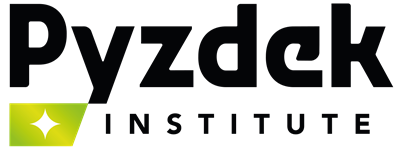Your cart is currently empty!
Lean Six Sigma Innovation: A New Path for Operational Transformation
In the past, there have been discussions about the constraints of Lean Six Sigma and caution when applying it to innovation. This stance stemmed from observations that organizations attempting to measure innovation using operational metrics often suppressed the creative process. The misapplication of Lean Six Sigma, treating creativity as a procedural output, was considered a pitfall to avoid.
Lean Six Sigma Innovation: An Expanded View
However, this is not the whole story. Upon closer inspection of my clients’ work with Lean Six Sigma and reviewing student projects, it is evident that Lean Six Sigma Innovation is a reality.
In Phase I, when companies begin Lean Six Sigma, it is typically seen as an initiative. The initial efforts concentrate on developing a culture open to change, organizing change infrastructure, training change agents, and executing projects that align with the organization’s vision. This groundwork paves the way for innovation. The real transformation lies in the shift in organizational thinking, specifically:
- Being fact and data-driven: Opinions transform into hypotheses to be rigorously tested.
- A customer-focused mindset: They delve into understanding the voice of the customer, gaining deeper insights into customer needs.
- Organizations are viewed as both processes and functions.
- There is a nuanced understanding of variation.
- They see outcomes as systems-driven rather than individual-driven.
- They comprehend that processes are transfer functions converting inputs into outputs.
- They understand the significance of focusing on few quality-critical drivers.
- They possess the know-how of organizing people for change.
As change agents complete their tenure and return to their primary roles, they gradually modify the organization’s DNA, moving into Phase II.
Lean Six Sigma Innovation: The Second Phase
Phase II is marked by the cultural shift taking root, with former change agents in leadership roles. These leaders now view the Lean Six Sigma Innovation approach as the optimal way to guide the organization towards its vision.
They realize that they can devise new and innovative methods to cater to their customers’ latent needs, leveraging their customer knowledge and insights gained using Lean Six Sigma on a smaller scale. They better understand the organization’s capabilities based on experiences learned during the initiative’s deployment. Lean Six Sigma Innovation transcends discrete improvement projects and becomes the framework for leading the entire organization towards its vision.
Leaders also learn a new way to lead. Involvement in defining core processes, identifying process owners, finding improvement opportunities, defining these opportunities’ drivers, selecting relevant metrics, and linking these metrics to organizational activities provide them a novel way to get things done.
The amalgamation of a new thinking approach, intimate customer knowledge, a change-embracing culture, and a novel leadership method enables leadership to unify disparate parts of their organization, all concentrating on a single purpose: wowing the customer. In essence, this is Lean Six Sigma Innovation.
This is not the aforementioned clumsy attempt to measure the immeasurable or “manage the innovation process.” Instead, it’s a brilliant extension of Lean Six Sigma’s scope, from being a pure operational improvement tool to purposefully seeking innovative improvement opportunities. Lean Six Sigma Innovation addresses creating a resilient organization that quickly responds to changing customer needs and competitive pressures and enhances the human condition by designing never-before-conceived products and services.
In summary, Lean Six Sigma becomes the launchpad for perpetual innovation. It’s a natural progression of the concept of continuous improvement, echoing the transformative power of Lean Six Sigma Innovation.

Leave a Reply